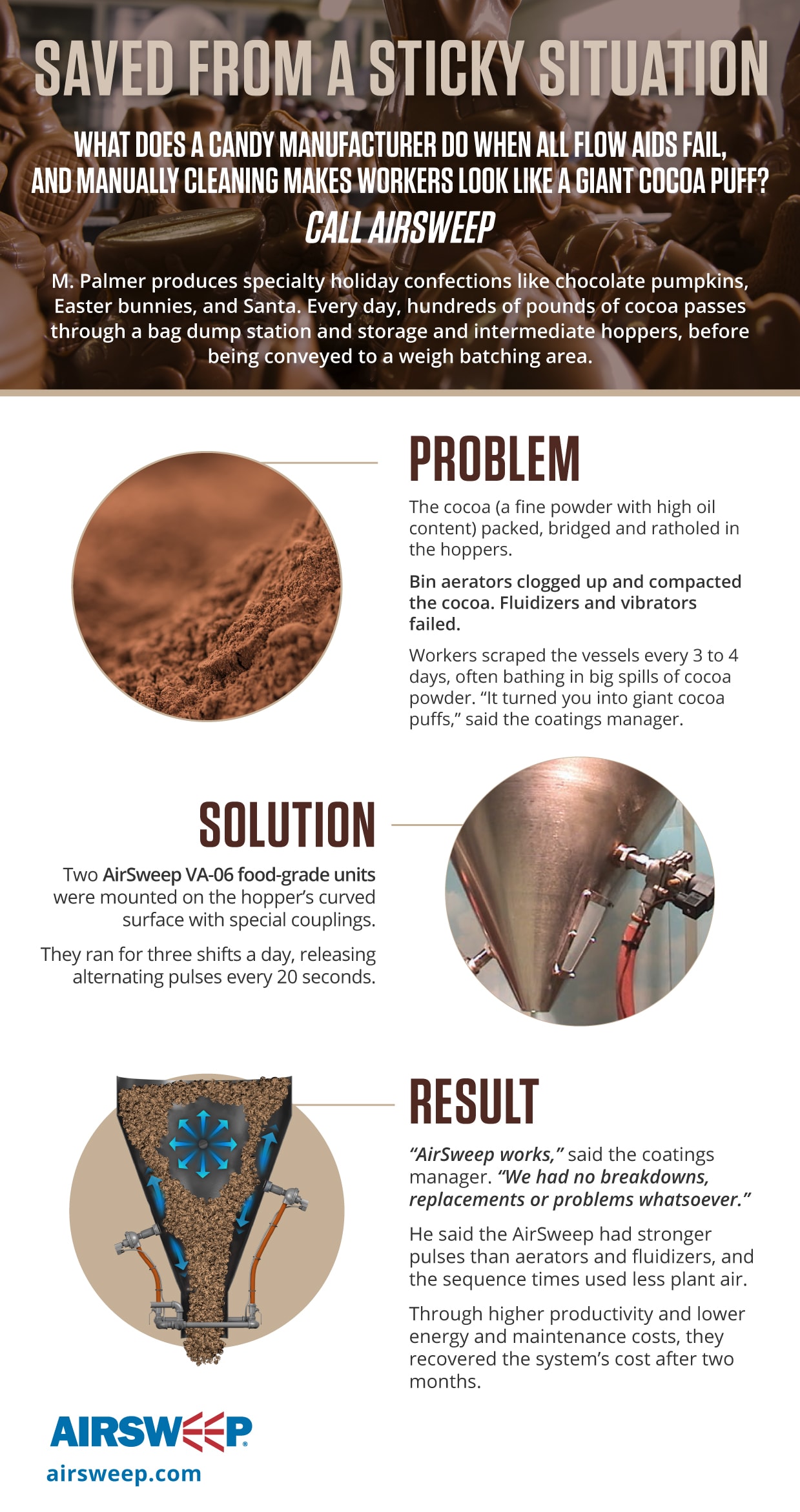AirSweep Saves R.M Palmer From a Sticky Situation
R.M. Palmer, a candy manufacturer in Reading, Pennsylvania, produces specialty holiday confections for US and international distribution. Some creations include novelties such as chocolate pumpkins, Easter bunnies, and Santas. The privately-owned company has been making confections for 50 years.
To make chocolate, cocoa powder is poured from 50-pound bags into a bag dump station with an integral dust collector. The powder is gravity-fed to a large storage hopper. From there, it moves to a smaller intermediate hopper that discharges into a rotary airlock, then is pneumatically conveyed to a weigh batching area.

Problem
Their cocoa powder is very fine and has a 12% oil content. It would pack, bridge and rathole in the intermediate hopper. Workers had to do manual cleaning every 3 or 4 days.
“It wasn’t a pretty sight,” said coatings manager Bob Wieland. After striking the hopper with a large mallet to loosen the powder, operators would open an access door.
“We had to reach through the door and scrape down the hopper walls with a plastic scraper,” Wieland said. “If you weren’t careful as you reached the door, the powder could fall on you and turn you into a giant cocoa puff! We had some pretty big spills in the past.”
Solution
Wieland saw an advertisement for a bin discharge system that injects air pulses between the material and vessel wall to lift and sweep material off slopping surfaces. Wieland was wary of all bin discharge system claims by then, but he liked AirSweep’s trial period and guarantee.
“A lot of manufacturers say their product will work but they don’t back it up,” Wieland said. “I told the rep that I’d used three other units with no luck, and he guaranteed the system would work or I wouldn’t have to pay for it. Their trial period allowed 30 days to install the bin discharger and 30 more to use it. I couldn’t go wrong.”
Two AirSweep VA-06 food-grade units were installed 180 degrees apart, 1.5 feet above the hopper outlet. Special couplings mounted the units to the hopper’s curved surface. A CB04-4 programmable sequence timer with NEMA 4 enclosure triggered alternating ¼-second air pulses every 20 seconds.
This solved the mounting problem and all 24 VA-06 units were attached. Holes were drilled into the refractory, then mounted with rings on top of the incoming duct.
Results
The plant went from downtime every 3 or 4 days to “no breakdowns, replacements, or any problems whatsoever.” They were even able to add two production shifts per month, increasing output.
“AirSweep works,” Wieland said. “It has a stronger air pulse than the bin aerators or fluidizers we previously installed. The air moves the powder down in a very large column so powder doesn’t stick to the walls.”
AirSweep was also more convenient and cost-efficient than other flowaids. “It’s very quiet; you hardly hear it run. The sequence times saves plant air. The system installed very easily and is built very simply.”
AirSweep runs three shifts per day, 7 days per week. Through increasing productivity and lower energy and maintenance costs, they were able to recover the system’s cost after just two months of operation.




